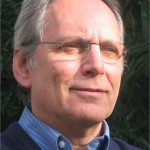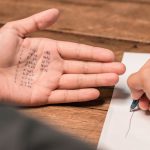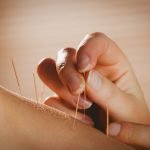Pain as Teacher: Listening for its Meaning, Message, and Opportunity
Paul Epstein, ND
In chronic pain, what we call the ‘body’ plays a mean trick on what we call the ‘mind.’ It tells the patient that the pain is all in the body, when in fact over time the pain is less and less in the ‘body’ and more and more in the mind. But always it is both. I believe this important aspect of pain is often neglected in the search for ‘medical’ or physical ‘causes of pain.’
Dorene O’Hara1
Patients come to us because they are in pain and want us to help them get rid of it.
However, for many individuals with chronic pain symptoms, the healing process involves just the opposite approach of opening to the pain, listening to the pain, seeing the pain as a teacher and guide, and engaging in a healing process integrated with therapeutic modalities and treatments that may also be necessary. From my clinical work over the years with patients in pain and from my personal life, I have come to understand that sometimes we can cause ourselves more pain and suffering by our efforts to eliminate them. We can heal the underlying cause of pain when we make the choice to have the courage to face it, allow it, and find its meaning and message.
Strangely and paradoxically, the times in my life when I opened to and surrendered to my deepest pain were also my deepest healing moments. This principle of pain is universal, whether in a physical, mental, emotional, or spiritual context.
Treating patients with certain chronic “physical” pain symptoms and syndromes, such as migraines, tension headaches, fibromyalgia, irritable bowel syndrome (IBS), or chronic back, neck, pelvic, and abdominal pain, requires a mind-body integrated approach. One must integrate the physical, psychological, and spiritual aspects in diagnosis and treatment. Mindfulness meditation, guided imagery, stress counseling, contemplative psychotherapy and journaling, and narrative medicine are some of the mind-body therapies and techniques that work effectively with individuals experiencing chronic pain.
The Mind Masks Emotional Turmoil With Physical Pain
Author of The Mindbody Prescription: Healing the Body, Healing the Pain, John Sarno, MD,2 specializes in the diagnosis and treatment of pain. He has been a pioneer in our clinical understanding of the mind-body pain connection and states how he learned that “unconscious emotional phenomena necessitate…physical symptoms,” “emotions that cannot be tolerated…must be repressed,” and “the mind chooses to mask emotional turmoil with physical pain.”2 He asks: “What emotions could be so terrible as to induce the brain to subject someone to severe physical pain and frightening neurological symptoms? The answer to this question is basic not only to the understanding of these pain syndromes but to the whole range of psychosomatic disorders.”2
He calls such pain disorders tension myositis syndrome (mind-body syndrome).
Howard Schubiner, MD,3 further developed the work of Dr Sarno in his book Unlearn Your Pain: A 28-Day Process to Reprogram Your Brain. His mind-body program is based on the premise that “chronic pain is often caused by nerve sensitization and learned nerve pathways triggered by stress and emotions (rather than actual tissue destruction)…that emotions are very powerful forces that can cause physical symptoms and this pain can be unlearned.”3 To relieve the pain, one must find the underlying cause.
A Gastrointestinal Function Disorder Is a Mind-Body Syndrome
A thin 21-year-old woman was seen with symptoms of chronic IBS, anxiety, and mild depression. After intake history, I began integrating a basic naturopathic whole-person approach of diet and stress counseling.
I began exploring her biography and family history in greater depth, as issues with her family and father specifically were her main stressors. She came from a family that abused alcohol and manifested classic symptoms as described in Adult Children of Alcoholics Syndrome: A Step-By-Step Guide to Discovery and Recovery by Wayne Kritsberg.4 These included shame, hypervigilance, fear, indecision, tense shoulders, anger, anxiety, inability to have fun, crisis-oriented living, and of course IBS, which brought her in. She described her IBS symptoms of long duration, some 6 to 7 years, by saying that IBS disgusted her and made her feel sick to her stomach. She used the exact same words and phrase in a guided imagery session to describe how she felt about her abusive alcoholic father when he would verbally and physically abuse her, her mom, and her younger sister. She had learned to “walk on eggshells,” wondering and waiting for his next drunken outburst of abuse, living with constant fear and anxiety, exacerbated also by her IBS, a vicious cycle. When not drinking, her father was a nice, kind, and caring man to all. Although she had seen many physicians over the years, the issue of her coming from an alcoholic home had not been previously addressed or integrated in care beyond suggestions of stress management.
She was never asked and she never told her story about the burdens of repressed emotions she was carrying and the somatic memories of stress and abuse living in her body and manifesting as IBS. We began to engage her to participate fully in a healing process and to face and explore this issue directly for the first time. Mind-body therapy involving counseling, mindfulness meditation, guided imagery, journaling, and support groups, integrated with individualized nutritional and herbal digestive support, resulted in reducing and managing her symptoms, followed by healing, transformation, and full recovery.
“Leave Him Alone. He Only Needs to Feel His Pain”
A brief biographical note may give insight into how I came to be this kind of physician, supporting patients to explore, open up to the truth of their pain, and release the emotional conflicts and burdens that are causing pain and disease.
As a soldier in World War II, my dad cleared the battlefields of dead bodies, weapons, and equipment, while making sure all body parts and name tags were placed in the right body bag. After the war, some of the chronic symptoms he suffered from were nightmares, anxiety, and rage. As a child, there were times when I could see, hear, and feel his pain and the burden of terror in his eyes and voice. No one asked, and he did not tell about what had happened. His heart ached with chest pain, and he developed heart disease. At age 57 years, while undergoing “preventive” bypass surgery, he died on the operating table.
My sense is that they were bypassing not only his clogged artery but also the truth of his pain, trauma, and somatic memories, eventually causing disease and death. In those days, it was called shell shock. Today, it is called posttraumatic stress syndrome. I came to understand that, while no one was asking about and listening to his biography of stress, trauma, and repressed emotions, my dad’s heart and body remembered and bore the burden of his unhealed and untreated “invisible” wounds. After his death, I had a recurring dream in which I am holding my father in my arms as physicians are coming to take him away, pulling him out of my arms, while I am screaming to no avail: “Leave him alone. He only needs to feel his pain.”
So, my work has become not just to help patients get rid of their pain. It is to help them open to it, feel it, heal it, and free themselves from pain—to “unlearn their pain.”
Such therapy is about facing the truth, healing and unburdening the wounds, and freeing the mind-body from disease. Patients arrive in our offices seeking treatment for their disease. What are we looking and listening for? What are we asking about? How do we work with what we find when we hear it?
Author of In the Lap of the Buddha,5 Gavin Harrison spoke in an interview published in Tricycle magazine about transformation through suffering and working with pain:
When you feel the fear and you feel the rage in meditation, there’s no storyline. There’s just the arising and passing away of the emotions and the sensations of the body and seeing how they relate to one another. And in that seeing, the abused person becomes less and less a victim of what’s going on because you realize that you have choices that weren’t available to you before. Having choices is a liberating experience. Meditation practice is about the experience of what is, of what’s really going on. That is what is liberating. And this truth is quite beyond the story.6
Awareness during meditation leads us to choices and activates our will to take action, change, and heal.
Meditation as Listening and Facing Painful Truth
When any experience of body, heart, or mind keeps repeating in consciousness, it is a signal that this visitor is asking for a deeper and fuller attention. Under all the tears, the pain, the fear, and the anger we have contracted our self around, we can find freedom, joy, and ease in the face of all life.
-Jack Kornfield7
And the time came when the risk to remain tight in a bud was more painful than the risk it took to blossom.
-Anais Nin
For pain syndromes that one must learn to “live with” and “be with,” a mindfulness and compassion meditation approach can be effective in lessening pain and suffering. When physical pain is unavoidable, meditation practice can ease mental suffering, and one learns to appreciate the adage that “pain is inevitable, suffering is optional.” A key teaching in this context is that it is not about what is happening but how we relate to it. We can learn to relate to pain and choose how to respond vs get caught in a conditioned reaction and resistance that serves only to worsen the pain and suffering in a self-perpetuating vicious cycle.
Arline was a patient suffering from chronic pain of arthritis. Following are excerpts of a letter from her in which she shares her relationship with pain and her healing process:
I spent decades denying and avoiding the pain of an unsatisfying, unexamined and unlived life.
Finally, the physical pain of rheumatoid arthritis—and a lucky coincidence—got me to a talk on mind-body healing by Dr. Paul Epstein. I sensed that he was pointing the way to the most profound kind of healing—of the body, mind and heart—so I started to see him weekly. I vividly remember our first session. Suddenly, I was revealing to him my oldest stories and deepest wounds, which I had never shared with another person.
The heavy locked door of the darkened ‘house’ of my psyche opened a crack as I began the long process of letting my pain in.
I went through a long period of judging the pain and resisting it and struggling with it. (Sometimes, of course, it feels like I’m still doing that.) Then I began to recognize and accept the pain, and a huge sigh of relief to body and soul reverberated throughout the ‘house.’ Now there are even times when I can see ‘my’ pain as just pain, more universal and not so tied up with my own identity.
Often now I can use pain as a hard-earned and invaluable tool that can open the door to further acceptance and healing. It can be a thermostat to indicate my internal weather. It can be a compass for my journey. Perhaps physical, psychological and spiritual transformation for me is just a very long process of cleaning house. No great epiphanies or blissed-out states of enlightenment, just the joy of the lightening. I am simply a traveler who must be on this journey of healing as surely as I must breathe. Freedom has many faces.
-Arline
Meditation Contemplation on Working With Pain and Difficulty
It is the truth which liberates, not your effort to be free.
-Krishnamurti
Pain and difficulties are learning opportunities. To get in touch with what is troubling you and to open to it with wisdom and compassion, here is a basic exploration exercise that I often include in the workshops and classes I conduct:
- Find a time when you have nothing you have to do and when you will not be rushed or interrupted.
- Sit in a quiet space in a relaxed position. You may wish to close your eyes.
- Tune in to the rhythm of your breathing, being aware of each intake and outtake breath.
- Notice the body relaxing and the mind becoming calm.
- Allow yourself to be open and receptive.
- Begin to ask yourself a few questions, and patiently listen for the response from your inner wisdom: (a) If my symptom, issue, or pain has a meaning and a message, what might that be? (b) Have I suffered by my reaction and response to it? What have I added? (c) Is it asking me to let go of something? Can I accept the things I cannot change? (d) Is there an opportunity and lesson in this situation? Where is the healing?
Ask one question at a time. Do not rush from question to question. Do not judge the answer. Know that you may get different answers at different times when you do the exercise.
7. After you have asked all the questions, wish to send compassion to your difficulty and to yourself. Imagine opening your heart to receive and welcome your wounded parts and the burdens they carry. Embrace them with mercy and awareness by gently and slowly repeating the following phrases (or use your own meaningful phrases): (a) I care about my difficulty. (b) I welcome my difficulty into my heart of compassion. (c) I accept you, my difficulty, just as you are with unconditional friendliness. (d) May I have courage and be free from fear. (e) May I be peaceful with what is happening. (f) May I be free from suffering.
8. Repeat these phrases as often as you wish.
9. Slowly open your eyes, and gently move your body.
10. Take a minute to feel what change, if any, this exercise has brought about in your physical and mental perceptions of the pain or difficulty you were working with.
When pain is touched with compassion, all suffering dissolves.
-Stephen Levine
Conclusion
In conclusion, the following poem was written by a patient who taught me about courage to face painful truth and to change one’s life—that in the heart of the pain is the healing:
The Power in My Pain
Joan E. Salzberg
My pain has shaped my life
With contours of compassion
Through loss and sorrow I have known
My pain has changed my life
With unsought understanding
Of grief and anger and of shame.
My pain has led my life
With an awakening spirit
Upon a path of inner light.
My pain has shown the way
To find forgiving peace
Within a gentle, loving heart.
Dr. Paul Epstein, ND is an international teacher and speaker with more than 25 years’ experience in mind-body integrative medicine and its clinical application. As a teaching expert in mindfulness-based mind-body therapeutics, he integrates the “classical” naturopathic principles with his background and training as a mindfulness meditation and Buddhist Dharma teacher, interactive guided imagery guide, yoga instructor, and internal family system psychotherapist. As a practitioner, he integrates a whole-person integrative approach with contemplative psychotherapy, guiding each patient’s self-healing journey and connecting with his or her spiritual path. He maintains a private practice in Westport, Connecticut, and mentors healthcare professionals to integrate mind-body therapies in their life and clinical work. He specializes in treating patients with chronic and stress-related disorders and mind-body syndromes, transforming pain and illness into a journey of self-healing and an opportunity for spiritual awakening and happiness.
References
1. O’Hara D. Heal the Pain, Comfort the Spirit: The Hows and Whys of Modern Pain Treatment. Philadelphia: University of Pennsylvania Press; 2002.
2. Sarno J. The Mindbody Prescription: Healing the Body, Healing the Pain. New York, NY: Warner Books Inc; 1998.
3. Schubiner H. Unlearn Your Pain: A 28-Day Process to Reprogram Your Brain. Pleasant Ridge, MI: Mind Body Publishing; 2010.
4. Kritsberg W. Adult Children of Alcoholics Syndrome: A Step-By-Step Guide to Discovery and Recovery. New York, NY: Health Communications Inc; 1985.
5. Harrison G. In the Lap of the Buddha. Boston, MA: Shambhala Publications Inc; 1994.
6. Tworkov H, Goodman T. Lotus in the fire: an interview with Gavin Harrison. Tricycle Buddhist Rev. Spring 1996. http://www.tricycle.com/interview/lotus-fire. Accessed May 27, 2011.
7. Kornfield J. A Path With Heart: A Guide Through the Perils and Promises of Spiritual Life. New York, NY: Bantam Books; 1993.










